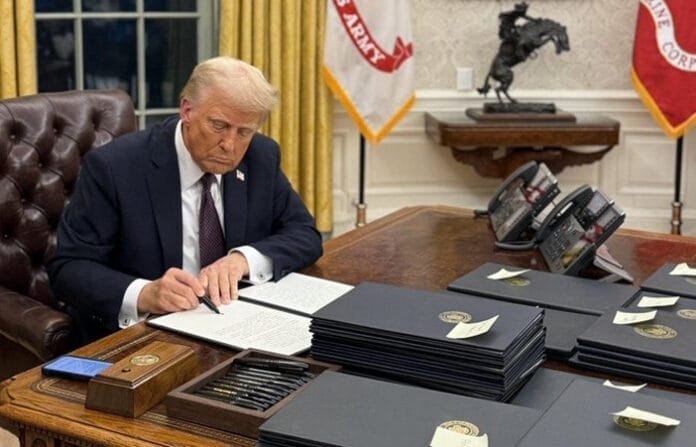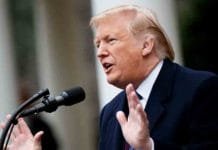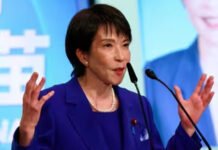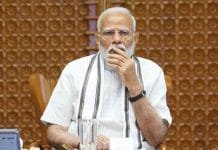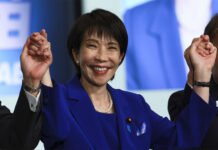President Donald Trump has launched his first major Asia tour of his current term, setting out to Malaysia, Japan, and South Korea with the dual aims of clinching trade deals and resetting U.S. relations in the Asia‑Pacific region. With high‑expectation meetings ahead — including a much‑anticipated face‑to‑face with Chinese President Xi Jinping — the trip will test the U.S. leader’s deal-making credentials on the global stage. Expectations are high, and the challenges many.
The Big Picture: Highlights
The trip spans Malaysia → Japan → South Korea, marking Trump’s deepest engagement in Asia since returning to office.
A major trade agreement with Malaysia is expected to kick off proceedings.
The agenda includes witnessing the signing of a peace deal between Thailand and Cambodia at the ASEAN summit in Kuala Lumpur.
The central event: Trump’s meeting with Xi Jinping in South Korea, arguably the most closely watched encounter of his trip.
A backdrop of regional security tensions — including a recent ballistic-missile launch by North Korea — adds urgency.
Unpacking the Trip: What’s On the Agenda
Malaysia First: Trade & Peace
In Kuala Lumpur, Trump aims to reinforce his image as an “international dealmaker.” Among the top goals: a trade agreement with Malaysia and supporting the signing of a substantive cease-fire between Thailand and Cambodia. He intends to “burnish his reputation” by opening up business ties while lending his presence to regional diplomacy.
On the peace front, the gatherings at ASEAN coincide with efforts to formalize the “Kuala Lumpur Accord,” which would remove landmines and heavy artillery from the Thai‑Cambodia border zone.
The Big One: China & Xi
The centerpiece of the visit is the meeting between Trump and Xi Jinping in South Korea. This will be their first in‑person meeting since 2019.
Trump has publicly stated he expects “a fantastic deal” with China.
The context is heated: China has imposed new export-controls on rare-earth minerals, and the U.S. has warned of potential tariffs if no deal is struck.
Regional Security on Edge
Amid the diplomatic fanfare, regional tensions are rising. North Korea has fired short-range ballistic missiles just days before Trump’s arrival.
That means as Trump meets allies and adversaries alike, his team must navigate not just trade and diplomacy, but also military-strategic considerations in the Asia‑Pacific theatre.
Voices on the Ground
“I think we’re going to end up having a fantastic deal with China… It’s going to be a great trade deal. It’s going to be fantastic for both countries, and it’s going to be fantastic for the entire world.” – President Donald Trump
“Even if it’s a short meeting… in the broader scheme of things… with all that the United States has to deal with these days, it wouldn’t necessarily be a bad thing.” – Victor Cha, CSIS, commenting on a possible Trump‑Kim meeting in South Korea context.
“As the international landscape becomes increasingly dominated by contestation rather than consensus… ASEAN finds itself at a crossroads.” – Malaysian Foreign Minister Mohamad Hasan
Why This Trip Matters
Diplomacy with a Difference
Although previous U.S. presidents have flown to Asia, Trump’s visit stands out for its convergence of trade diplomacy, regional peace‑mediation, and China escalation. The symbolism is strong: the U.S. wants to reaffirm its Indo‑Pacific role and show that major engagement is on the table.
Trade Winds in Motion
Should a deal with Malaysia materialize, it may become a template for U.S. trade strategy in Southeast Asia — especially as China exerts influence and supply chains are being recalibrated post-pandemic.
China Game-Changer?
The Xi meeting is being watched globally. If Trump can broker even partial agreements on rare-earths, tariffs, or energy imports, it may signal a reset—or at least a strategic recalibration—in Sino-U.S. relations.
Strategic Messaging
With North Korea’s missile launch and regional alliances shifting, Trump’s Asia trip takes place in a high-stakes context. The U.S. must reassure allies, deter adversaries, and position itself for influence.
What to Watch Next
Deal with Malaysia: Will the trade agreement be signed, and if so, what are the terms?
China Meeting Outcomes: Will concrete deliverables be achieved, or just promises?
Thailand‑Cambodia Accord: Will the “Kuala Lumpur Accord” be finalized, and will the U.S. play a substantive role in monitoring compliance?
North Korea / Security Shock: Will there be references to Pyongyang’s missile launch, or will security be shaded around announcements?
Ripple Effects in Indo-Pacific: How do other major players respond to U.S. re-engagement?
Conclusion
President Trump’s Asia tour is more than a photo opportunity — it’s a strategic pitch. From trade deals in Malaysia, diplomacy at the ASEAN table, to a headline meeting with Xi Jinping in South Korea, the visit bundles economic ambition, regional peace efforts, and geopolitical signaling. With the world watching, success will be measured not just by handshakes and headlines but by signed agreements and verified follow-through.
For anyone tracking global trade, U.S.–China relations, or Indo-Pacific security, this trip warrants close attention.

